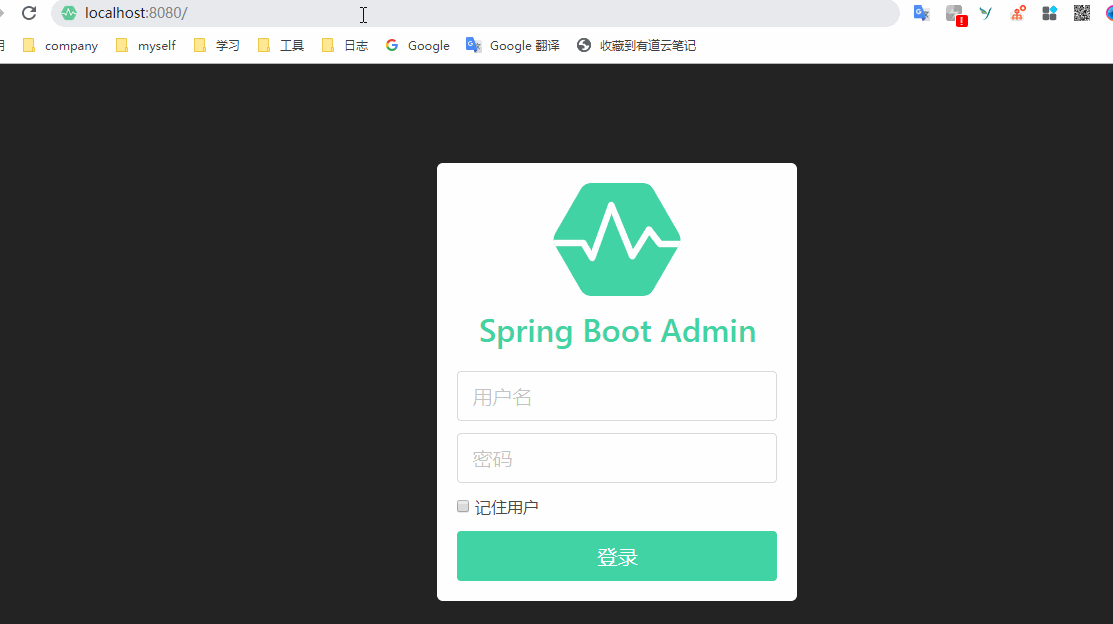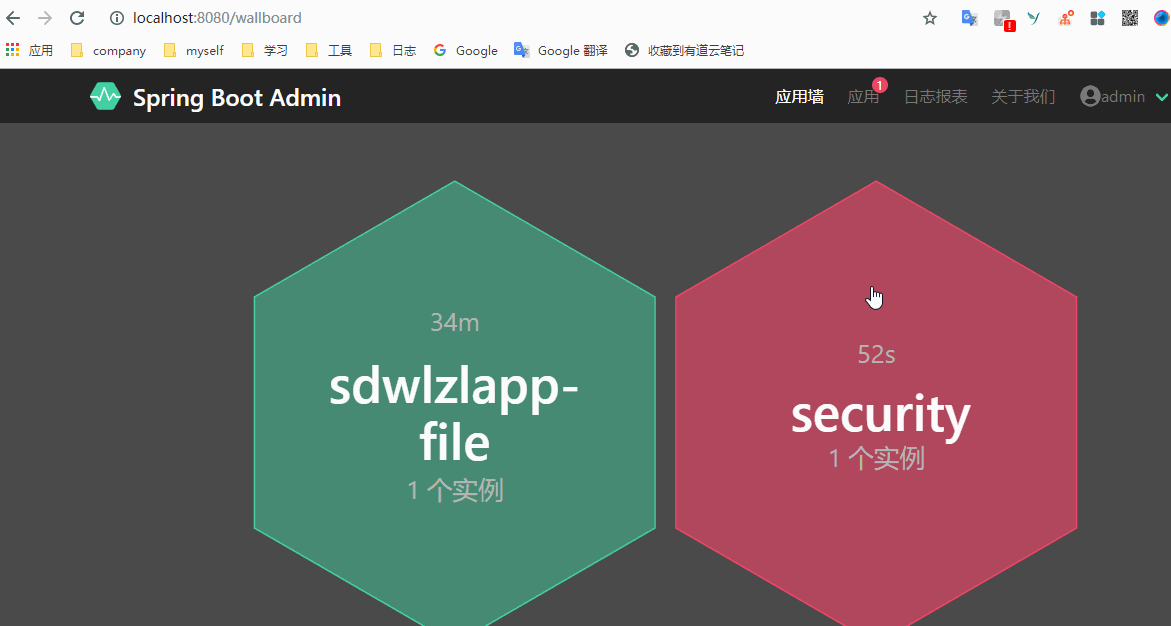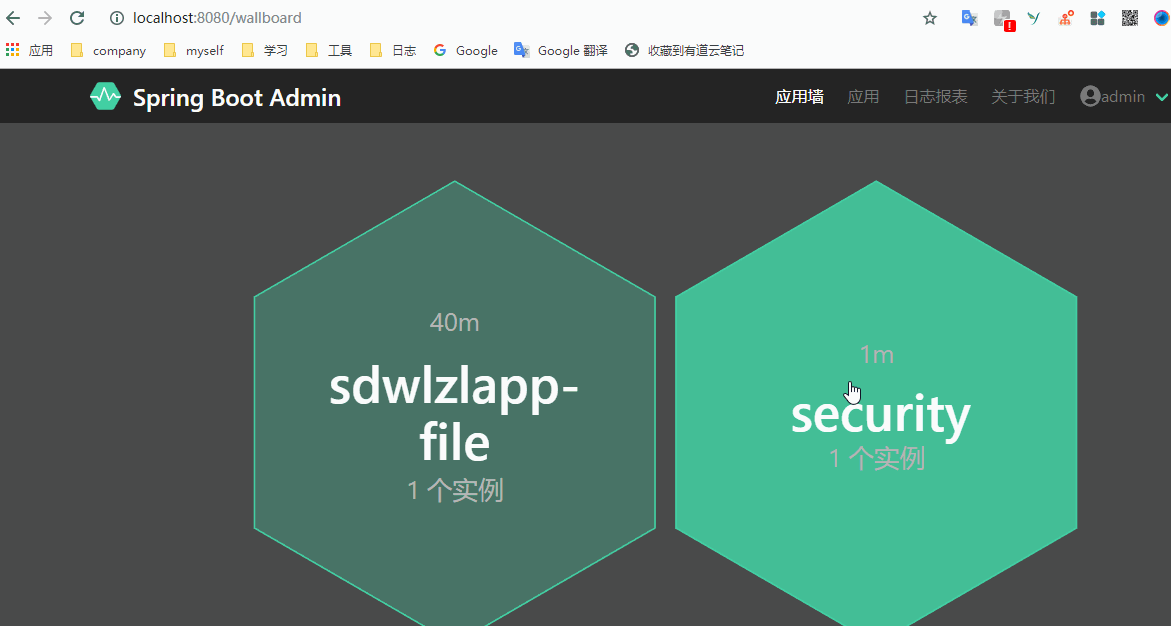SpringBoot-集成SpringBootAdmin-进阶版
上一篇我们已经学习了SpringBoot-集成BootAdmin
前言
我们知道项目的监控是尤为重要的,但是我们如果用jdk 自带的jconsole 和jvisualvm 的话会非常繁琐,且界面不是很友好。之前我们使用了spring boot 项目,但是都没有对项目有一个很好的监控。在spring 家族中有 spring-boot-admin 可以很好的帮我们起到监控微服务项目的作用。
spring-boot-admin 是一个针对 Spring Boot 的 Actuator 接口进行 UI 美化封装的监控工具,它可以在列表中浏览所有被监控 spring-boot 项目的基本信息、详细的 Health 信息、内存信息、JVM 信息、垃圾回收信息、各种配置信息(比如数据源、缓存列表和命中率)等,还可以直接修改 logger 的 level。
spring-boot-admin 分为服务端和客户端。服务端是一个单独的微服务,用来查看监控的项目的运行情况,客户端是我们一个个的微服务项目。所以要想让我们的项目被服务端监控到,就需要将我们的服务注册到服务端去
搭建admin-server
我们先来搭建spring-boot-admin 的服务端,上面说了服务端是一个单独的项目。所以我们创建一个新的springboot 项目。创建好后,我们做一下修改
配置pom.xml
4.0.0
org.springframework.boot
spring-boot-starter-parent
2.2.2.RELEASE
com.quellanan
springbootadmin
0.0.1-SNAPSHOT
springbootadmin
springbootadmin project for Spring Boot
1.8
2.2.1
org.springframework.boot
spring-boot-starter-web
de.codecentric
spring-boot-admin-starter-server
org.springframework.boot
spring-boot-starter-security
de.codecentric
spring-boot-admin-dependencies
${spring-boot-admin.version}
pom
import
org.springframework.boot
spring-boot-maven-plugin
启动类
在我们的启动类上加入@EnableAdminServer 注解,如果不加的话,项目可以正常启动,但是看不到任何东西。@EnableAdminServer 注解的作用就是启动监控
@SpringBootApplication
@EnableAdminServer
public class SpringbootadminApplication {
public static void main(String[] args) {
SpringApplication.run(SpringbootadminApplication.class, args);
}
}配置 security
这样配置好之后,就可以启动项目啦,但是我们这里先不启动,因为上一节我们学习了,spring-boot-security .这里我们将它用起来。
我们前面已经引入了 security ,接下来,我们在application中增加配置
spring.security.user.name=admin
spring.security.user.password=123456表示这个用户才能访问。另外我们创建一个 SecurityConfig 类 继承 WebSecurityConfigurerAdapter 重写 configure(HttpSecurity http) 方法。代码如下:
@Configuration
public class SecurityConfig extends WebSecurityConfigurerAdapter {
@Override
protected void configure(HttpSecurity http) throws Exception {
SavedRequestAwareAuthenticationSuccessHandler successHandler
= new SavedRequestAwareAuthenticationSuccessHandler();
successHandler.setTargetUrlParameter("redirectTo");
successHandler.setDefaultTargetUrl("/");
http.authorizeRequests()
.antMatchers("/assets/**").permitAll()
.antMatchers("/login").permitAll()
.anyRequest().authenticated().and()
.formLogin().loginPage("/login")
.successHandler(successHandler).and()
.logout().logoutUrl("/logout").and()
.httpBasic().and()
.csrf()
.csrfTokenRepository(CookieCsrfTokenRepository.withHttpOnlyFalse())
.ignoringAntMatchers(
"/instances",
"/actuator/**"
);
}
}现在我们启动一下项目看看。启动项目后输入
会跳转到 登录界面,进入主页现在是什么都没有的
搭建admin-client
到此我们服务端的配置就已经可以了,现在我们来配置一下客户端,我们随便找一个Springboot 项目,或者自己创建一个新的项目都可以
pom.xml
我们先在pom 文件中加入admin-client 依赖,注意这里的版本需要和server 的版本一致
de.codecentric
spring-boot-admin-starter-client
2.2.1
application.properties
spring.boot.admin.client.url=http://localhost:8080
management.endpoints.web.exposure.include=*
spring.application.name=sdwlzlapp-file
spring.boot.admin.client.username=admin
spring.boot.admin.client.password=123456注意点:
- spring.boot.admin.client.url 指向我们服务端的项目接口路径。
- management.endpoints.web.exposure.include 表示将所有端口都暴露出来,可以被监控到。
- spring.application.name 表示改项目在spring-boot-admin 上的的显示名称。
- spring.boot.admin.client.username 和password 就是设置的用户名和密码了,这里需要注意的是,如果admin-server 中没有集成 security 的话,不用配置用户名和密码也可以注册进去,在服务端可以监控到,但如果admin-server 集成了security,就需要保证client 中配置的用户名和server
演示
配置了上面这些,就就可以将项目注册到admin-server 中啦,我们启动一下项目
现在还有一个问题,如果我们项目本身就集成的安全框架,比如security ,没有登录的话不能访问接口,那这样的项目怎么被admin-server 监控到呢?比如就我们上节将的security 的demo ,我们注册进来,虽然监控到了,但是是一个失败的状态
可以看到,不难发现问题,那就是监控的接口也被项目本身拦截了,所以才导致是失败的状态,那要怎么修改了呢,其实也好处理,将这几个接口放开就可以了。我们在项目的SecurityConfig 类中configure(HttpSecurity http)加上
代码如下:
@Override
protected void configure(HttpSecurity http) throws Exception {
http.authorizeRequests()
.antMatchers("/", "/hello").permitAll()
.antMatchers( "/actuator/**").permitAll()
.antMatchers( "/instances").permitAll()
.anyRequest().authenticated()
.and()
.formLogin()
//.loginPage("/login")
.permitAll()
.and()
.logout()
.permitAll();
}